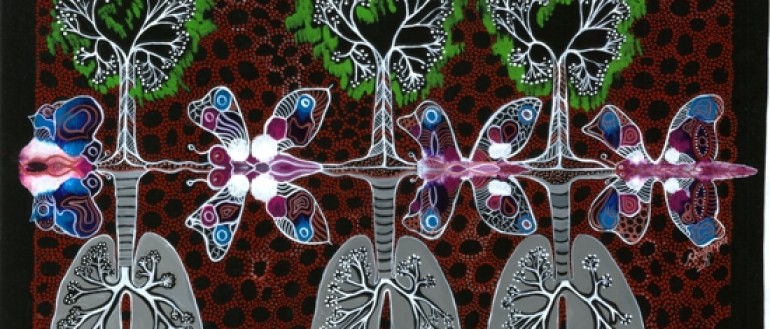Overview:
The Centre for Research Excellence (CRE) in Respiratory Health is a partnership between Indigenous Leaders, paediatric and adult clinicians, scientists and educationalists. The overarching aim of the CRE is to improve the respiratory health of children, particularly Indigenous children through research and education.
The CRE Respiratory Health aims to:
- Generate new knowledge that leads to improved health outcomes
- Ensure transfer of research outcomes into health policy and/or practice
- Develop the health and medical research workforce, particularly of Indigenous researchers
- Facilitate collaboration
- Record research and translation achievements.
The major respiratory problems facing Indigenous people are:
- Pneumonia
- Bronchiolitis
- Chronic Suppurative Lung Disease/Bronchiectasis
- Asthma.
Pneumonia
Indigenous infants in the Northern Territory (NT) suffer some of the highest rates of acute respiratory infections, including pneumonia, in the world.
Pneumonia is characterised by inflammation of the alveoli (small air sacs) in the lungs, resulting in poor movement of air due to a build up of mucous. This may result in breathing difficulties, cough, irritability and/or fever. Infants who experience poor hygiene and living conditions, poor nutrition, low birth weight and exposure to smoke are more likely to suffer from pneumonia.
Pneumonia resources:
Bronchiolitis
Bronchiolitis is both the most common cause of preventable deaths of Indigenous infants in the NT and the most common reason for their hospitalisation.
Bronchiolitis occurs in the winter months in temperate climates or in the rainy season in the tropics. It is a clinically diagnosed illness in children aged 12-24 months starting with 2-3 days of an upper respiratory tract infection, cold-like symptoms and fever. This is then followed by rapid breathing and/or shortness of breath. Mucous in the lower airways leads to airway swelling and obstruction, causing over inflation and increased breathing effort.
Chronic Suppurative Lung Disease / Bronchiectasis
Chronic suppurative lung disease (CSLD) results from a variety of disorders that cause lung injury. Sufferers typically have prolonged and/or recurrent periods of wet or productive cough, with or without other features such as coughing up blood, chest pain, shortness of breath on exercise, symptoms of asthma, fatigue, recurrent chest infections, growth failure, hyperinflation and chest wall deformity. It is diagnosed using radiology (CT scan of the chest) combined with clinical symptoms. A large proportion of adults in the NT with CSLD die by the age of 40 years.
Effective management of CSLD, particularly in children, prevents further lung deterioration. This involves intensive treatment when exacerbations occur. Treatment consists of different approaches and the main ones are antibiotics and chest physiotherapy. People with CSLD should also be regularly reviewed.
Bronchiectasis refers to CSLD where characteristic lung abnormalities have also been diagnosed by high-resolution chest computed tomography scans (HRCT). Bronchiectasis is usually defined as irreversible airway dilation. The prevalence of bronchiectasis in NT children is high compared with children in other parts of Australia.
Bronchiectasis resources:
Asthma
Asthma is a chronic disease of the airways. It affects the small tubes that carry air into the lungs. People with asthma have sensitive airways in their lungs which react to triggers that set off their asthma. This makes it harder for them to breathe. Asthma affects one in 10 Australians and affects people of all ages. There is no known cure, but in most cases can be well controlled with an asthma management plan. Symptoms of asthma include coughing, wheezing, shortness of breath, and chest tightness.
Asthma resources:
Paediatric:
Adult:

